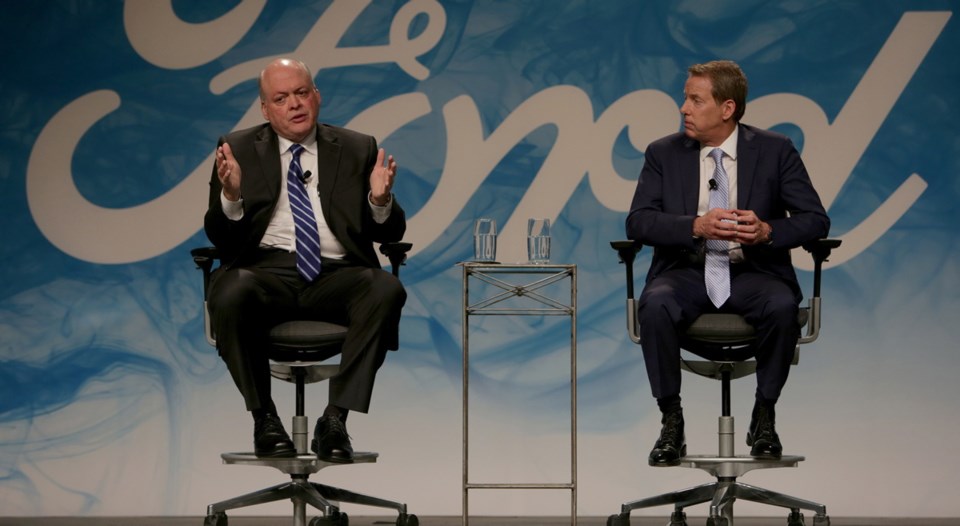LAS VEGAS — Ford CEO Jim Hackett offered an ambitious vision for the automaker’s autonomous vehicle business strategy last week at the CES tech conference here, depicting a future that will be as much as about networks of cars and traffic signals as any particular model of self-driving vehicle.
Ford will build these networked systems, he said, as well as the vehicles on the streets of this “City of Tomorrow.”
“The car and the system will be talking to each other,” Hackett told an audience of hundreds of trade industry folks in a Las Vegas hotel ballroom. “The car, obviously, is going to learn to drive itself, but the city’s transportation grid will mutate around what the cars need.”
He shared the stage with a series of Ford executives, who announced the automaker is working with a Silicon Valley start-up, Autonomic, to develop an information-sharing platform — the Transportation Mobility Cloud — that will enable vehicles, bicycles and mass transit to communicate.
The vehicles and bikes — even city stoplights and signs — will all communicate with each other through a system that Ford calls “Cellular Vehicle-to-Everything.” Ford is working with chipmaker Qualcomm to produce the system, which would eventually run at fast 5G cellular speeds, the next generation after today’s 4G or LTE.
Ford also announced it has inked a partnership with delivery service Postmates to begin pilot programs that will explore how self-driving vehicles can be used for making quicker and more convenient deliveries of groceries, food or retail goods.
“If we move quickly and dramatically shift our thinking,” Hackett said, “we can redesign transportation in our cities in ways that not only meet the growing demand, but improve the quality of life for everyone at the same time. It’s not a dream.”
Hackett was among the handful of keynote speakers last week at CES, formerly called the Consumer Electronics Show.
With nearly 300,000 square feet of auto exhibit space, this year’s CES was considered the fifth-largest auto show in the U.S. Car companies and suppliers often use CES to showcase their latest technology.
Hackett initially sat alone on the event stage, facing the audience while a computer rendering of a city unfolded behind him on giant screens. The city gradually expanded from a simple grey outline to a colourful panorama of buildings, people, vehicles and storefronts.
Ford plans to test its networked cityscape business in a city that it has yet to identify.
Ford executives explained each planned development in a series of blog posts on the website Medium, which is popular in Silicon Valley. Mobility is a familiar topic for Hackett, who previously headed the Ford Smart Mobility subsidiary before rising to chief executive last spring..



